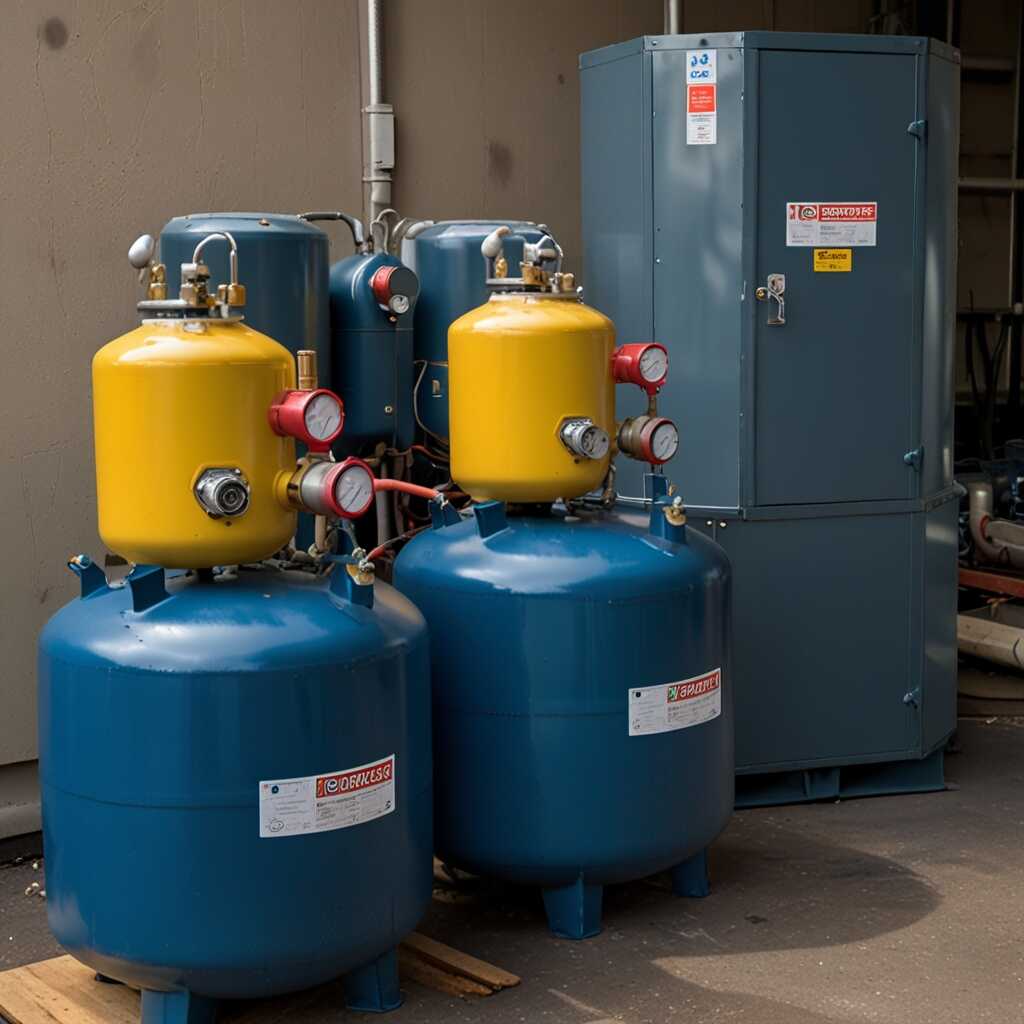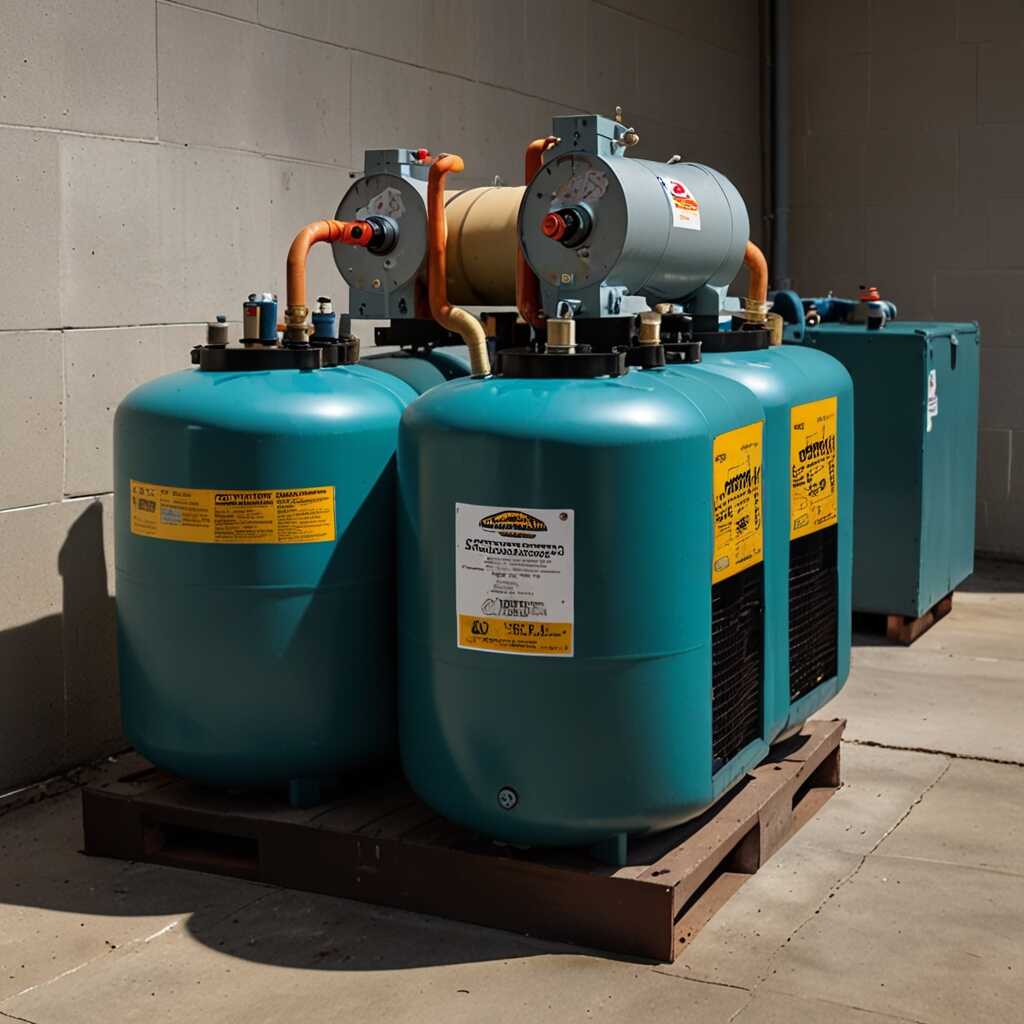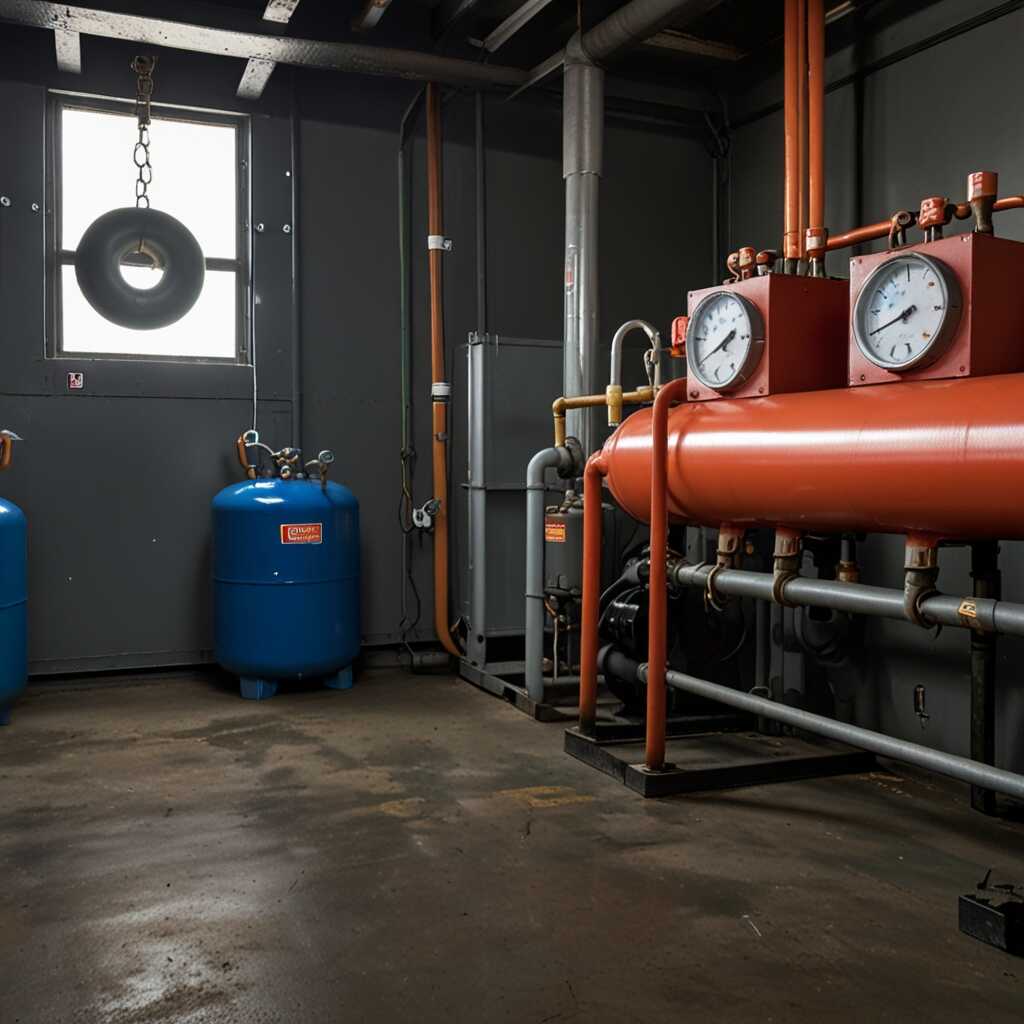Maximizing efficiency with dual-cylinder refrigerant recovery systems can significantly enhance refrigerant management in commercial HVAC settings. These advanced systems enable quicker recovery times and safer handling of refrigerants, boosting overall productivity. At Refrigerant Recovery Pro, we focus on providing HVAC professionals with expert guidance on such technologies. Understanding the advantages of dual-cylinder systems helps technicians and facility managers make informed choices for optimal operations.
Exploring the Basics of Dual Cylinder Refrigerant Recovery Systems
Dual-cylinder refrigerant recovery systems are advanced tools designed for efficiently recovering refrigerants from HVAC systems. These systems feature two cylinders, allowing them to recover refrigerants faster and more effectively compared to single-cylinder units. The added capacity enhances refrigerant recovery efficiency, making them ideal for commercial HVAC applications that require reliable and high-performance recovery equipment. This technology helps HVAC professionals manage refrigerants more effectively, ensuring compliance with regulations. Dual-cylinder systems can handle multiple types of refrigerants simultaneously, offering businesses greater flexibility and effectiveness in refrigerant management.
Key Features of Dual-Cylinder Refrigerant Recovery Systems
Dual-cylinder refrigerant recovery systems come with many features that enhance their performance in commercial settings. These systems are designed to maximize refrigerant recovery efficiency, making them invaluable for HVAC technicians. They include multiple ports for faster refrigerant transfer, and some models come with built-in refrigerant analytics tools to monitor system performance. The dual-cylinder configuration is proven to recover larger volumes of refrigerant faster, often improving recovery rates by over 50% when compared to traditional single-cylinder systems. These advancements make them a preferred choice among HVAC professionals for quick, reliable performance in refrigerant management.
Benefits of Dual Cylinder Systems for Commercial HVAC Applications
Dual-cylinder refrigerant recovery systems offer multiple advantages for commercial operations. They enhance recovery efficiency, allowing HVAC technicians to recover refrigerants faster, which saves time and labor costs. These systems improve overall refrigerant management by supporting larger refrigerant volumes, reducing the need for frequent tank changes. Dual-cylinder systems are designed to operate reliably under demanding conditions. Commercial HVAC applications benefit from their durability and proven performance, making them an essential choice.
Key Features of Dual-Cylinder Refrigerant Recovery Systems
Dual-cylinder systems possess features that significantly enhance their performance. They are equipped with dual compressors that enable faster refrigerant recovery. This design allows technicians to handle larger refrigerant loads without interruptions. The smart engineering ensures quicker pull-down rates and higher efficiency compared to single-cylinder alternatives. Additionally, many models include real-time monitoring, which provides essential data on recovery progress. This capability allows for adjustments on-the-fly, ensuring optimal refrigerant management throughout the entire process.

Impact on Operational Efficiency and Performance
Dual-cylinder refrigerant recovery systems provide significant advantages for HVAC professionals. They ensure operational efficiency by allowing simultaneous refrigerant recovery from multiple sources, which minimizes downtime. Features like increased capacity and faster recovery rates contribute to outstanding performance. By integrating these systems, technicians can experience improved service delivery. Results show that using dual-cylinder systems can reduce recovery time by up to 30%. This efficiency translates to higher client satisfaction and more reliable service. The ability to handle larger volumes makes these systems essential for managing complex refrigeration needs.
Key Features and Benefits of Dual-Cylinder Systems
Dual-cylinder systems are designed with features that significantly enhance recovery performance. They include larger cylinders and advanced compressor technology, enabling faster refrigerant recovery. This technology helps HVAC professionals to reduce downtime and improve efficiency. Enhanced reliability in refrigerant management is crucial for compliance with environmental regulations. With superior testing and proven data, dual-cylinder systems rank among the top choices for HVAC operations. Technicians can expect a better quality of service and streamlined operations, which ultimately results in greater client retention. These systems are a wise investment for commercial refrigeration needs.
Key Numerical Insights for Refrigerant Recovery Systems
- Dual-cylinder systems can recover refrigerants up to 50% faster than single-cylinder systems.
- It’s possible to recover up to 99% of the refrigerant from a system using proper techniques.
- Many dual-cylinder units have a recovery rate of 10 lbs per minute.
- Equipment with dual cylinders can handle refrigerants in excess of 400 psi.
- Cost per recovery using dual systems often decreases by 30% over time.
- These systems often weigh around 75 lbs, making them portable yet sturdy.
- Most dual-cylinder models feature a lifespan of more than 10 years with proper maintenance.

Cost Efficiency and Productivity Gains with Dual Cylinder Systems
Dual-cylinder refrigerant recovery systems significantly enhance cost efficiency for HVAC professionals. These systems offer increased recovery rates, which results in quicker refrigerant retrieval. Faster retrieval translates to reduced downtime, enabling technicians to complete more jobs in less time. The improved speed of dual-cylinder systems allows businesses to increase their service capacity. As a result, many HVAC professionals report approximately a 30% increase in productivity and efficiency, directly correlating to higher profitability. Moreover, lower operational costs come from reduced labor hours required for refrigerant recovery. This overall efficiency ensures that investments in dual-cylinder systems yield excellent financial benefits.
Understanding Operational and Maintenance Expenses
Operational and maintenance expenses for dual-cylinder systems are typically lower compared to single-cylinder systems. Dual-cylinder designs are built for durability. They can handle higher workloads without frequent breakdowns. With fewer repairs needed, the total cost of ownership decreases. Regular maintenance checks for dual-cylinder systems are straightforward and less time-consuming. Most HVAC professionals find that maintaining dual-cylinder systems takes about 20% less time than single-cylinder alternatives. This efficiency helps in enhancing the overall reliability of the equipment, providing HVAC technicians peace of mind and better service for their clients.

Ensuring Environmental Compliance with Refrigerant Systems
Dual-cylinder refrigerant recovery systems enhance compliance with environmental regulations by providing efficient and effective refrigerant capture. These systems allow for faster recovery rates and minimize refrigerant loss, which is essential in adhering to regulations like the Clean Air Act. HVAC professionals must be aware of specific regulations, such as EPA guidelines focusing on refrigerant management, to maintain compliance and industry credibility. The maximum allowable leak rate for refrigerants under EPA guidelines is 15 percent for systems with less than 50 pounds of refrigerant, emphasizing the importance of reliable recovery equipment performance in preventing emissions.
Understanding EPA Guidelines for Refrigerant Management
The EPA guidelines for refrigerant management are crucial for HVAC professionals operating in commercial settings. These regulations dictate the acceptable leak rates, recovery processes, and required documentation to ensure that businesses minimize their environmental impact. Dual-cylinder refrigerant recovery systems play a vital role in meeting these guidelines. They are designed for maximum performance, efficiently capturing refrigerants during service and maintenance. This efficiency not only aligns with the regulatory requirements but also promotes sustainable refrigerant management. HVAC technicians must stay informed about frequent updates and best practices to remain compliant and avoid significant penalties.
Advantages of Using Advanced Refrigerant Recovery Methods
- Operating these systems increases recovery efficiency significantly for HVAC professionals.
- Reduce downtime in commercial settings through faster refrigerant recovery.
- Less environmental impact due to higher recovery rates and compliance with regulations.
- Maintain lower operational costs by minimizing refrigerant loss during recovery.
- Improve safety by lowering the risk of refrigerant leaks through more effective processes.
- Enhance service quality delivered to clients through timely and effective recovery.
- Raise your business’s reputation as an environmentally conscious and efficient operator.

Applications of Dual Cylinder Systems Across Industries
Dual-cylinder refrigerant recovery systems provide significant benefits across various industries. They are ideal for commercial HVAC applications, including large retail spaces, hotels, and hospitals. Their design allows for simultaneous recovery of multiple refrigerants, enhancing reliability and efficiency. In industrial settings, dual-cylinder systems can handle increased demand for refrigerant management. They prove essential for maintaining compliance with environmental regulations while maximizing uptime. On average, dual-cylinder systems save up to 30% more time in recovering refrigerants compared to single-cylinder systems.
Key Advantages of Dual-Cylinder Systems in Commercial HVAC
Dual-cylinder systems are designed for commercial HVAC environments where efficiency is crucial. These systems provide faster refrigerant recovery rates, enabling technicians to complete jobs quicker. With the capability to recover multiple types of refrigerants simultaneously, they enhance overall performance. This leads to fewer interruptions in service and improved productivity. Moreover, their features contribute to better environmental compliance, ensuring safe refrigerant disposal. When selecting a recovery system, consider the proven efficiency and reliability of dual-cylinder models to improve your overall operational performance.
Minimizing Contamination Risks in Refrigerant Recovery
Dual-cylinder refrigerant recovery systems significantly reduce the risk of refrigerant contamination. They are designed to isolate different types of refrigerants, enhancing reliability. By utilizing separate cylinders for various refrigerants, the system protects against cross-contamination, which can affect system performance. Common materials like hoses, fittings, and valves can lead to contamination if not properly maintained. Regular checks should occur every 30 days to ensure testing and cleanliness of the process.
Understanding the Impact of Contamination on System Performance
Contamination in refrigerant recovery can severely impact system performance and efficiency. Oil, moisture, or foreign substances can compromise the integrity of the refrigerant. Dual-cylinder systems help ensure that the refrigerant remains clean throughout the recovery process. Regular testing is essential to maintaining reliability and ensuring operational effectiveness. Expert reviews recommend using high-quality materials for hoses and fittings to prevent issues. A reliable system contributes to successful refrigerant management.
Brands and Their Impacts on Refrigerant Recovery Choices
- Brand A: Known for ease of use, but may have a higher initial cost.
- Brand B: Offers robust portable units, ideal for outdoor environments with varying recovery needs.
- Brand C: Features advanced safety controls, but some users find it complex to operate.
- Brand D: Highly rated for durability and customer service, yet delivery times can be longer.
- Small businesses often prefer systems that fit limited budgets while maximizing efficiency.
- Commercial contractors tend to select dual systems that provide the best recovery rates for large jobs.
- Environmentally focused companies invest in efficient systems that align with sustainability goals.
Innovations and Future Trends in Refrigerant Recovery Technology
New innovations in dual-cylinder refrigerant recovery systems include enhancements in efficiency, speed, and reliability. These systems often incorporate advanced technology that speeds up the recovery process. Major brands like Recovery Pro and others are leading the way in developing these improved systems. The latest data shows dual-cylinder models can be up to 30% more efficient than traditional single-cylinder systems. This improvement maximizes recovery rates and supports environmental compliance mandates.
Key Features of New Refrigerant Recovery Systems
The key features of new refrigerant recovery systems include enhanced compressor technology, better filtration systems, and integrated smart controls. These features ensure reliability and efficiency. For example, many systems now include fail-safes that prevent refrigerant release during operation. Enhanced durability means these systems can handle demanding commercial environments. The integration of smart technology allows HVAC professionals to monitor performance remotely, improving operational efficiency and reducing downtime.